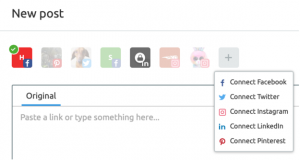
Nowadays, companies, brands, and even individuals are expected to have an optimized Internet presence. Whether a business creates a blog as part of a marketing initiative or an individual uses blogging to promote a personal brand, having a blog that draws organic traffic has become an important aspect of creating a successful online presence.
Though it can be tempting to pay for ad space, organic traffic is more important. Organic traffic consists of individuals searching specifically for you or your niche service or product, which means these are the individuals who are most likely to convert into customers or clients. Besides basic SEO practices, such as including proper keywords in your content and metadata, we offer several additional blogging tips here that can help you make the most of organic searches.
Know your niche, and find content opportunities.
In the fast-paced, instant-gratification world of the Internet, one of the biggest mistakes a blogger can make is trying to be all things to all readers. Instead of focusing your content on trends to gain more readers, figure out what is most important to you, and write about that.
Maybe you’re the new owner of a new dog grooming company, a marketer at a large corporation, an experienced writer, or a stay-at-home mom with a passion for DIY projects. Through the Internet, you can reach huge audiences hungry for good content about any one of these topics. Become an expert in your niche, and provide quality content that appeals to your specific readership.
Once you have determined your niche, research others who provide the same type of content. What posts are most popular? This is your passion; think about what information you would search for, and come up with a list of topics to write about. From there, see what content gaps exist in you niche, and then fill them with the best possible content.
For example, the owner of that small dog grooming business might find 2,341,748 articles describing the best shampoos for dogs but little information on the best options for dogs that have been sprayed by a skunk. A detailed article reviewing the most common shampoos in this category might draw more readers and rank higher for this more specific search topic than yet another generalized top 10 list.
Determine who the influencers are within your niche, and then network and promote your content.
Make a list of the top influential bloggers in your niche by finding the blogs with the highest readerships. Tools such as Buzzstream can help you determine who these influencers are, depending on specific keyword searches, and provide contact information for them. What kind of content are they creating? Take the great content you have created already and ask one of these top bloggers to provide a point of view.
You can also think on a bigger scale and create a post that includes advice from several influencers. Once your post goes live, make sure you contact these bloggers to let them know and share it on their social media accounts, which can be a great way to increase your own readership. The goal here is to get a link back from one or more of these influencers, who likely have high Google authority rankings in your niche. When one of these sites links back to yours, it will increase your search ranking and organic traffic.
Take advantage of content distribution and social networks to reach a wider audience.
Sharing content over social media networks is the first step in content distribution. Sharing strategically and often gives you the advantage of putting your content in front of the right audience, which will transfer into link clicking and organic traffic. The key is, once again, to know your audience and at what times they are most likely to see your post. Utilize account management applications to schedule content and share that content multiple times over different networks to gain the most exposure. Social referrals are an important factor in subsequent organic traffic.
Understand the importance of different types of link building.
 Broken link building: Broken link building can be time-consuming when you don’tuse tools. This method of link building involves finding broken links on other sites that are relevant to your content or have high authority value and then asking the site administrator to switch out the broken link for yours. Consistently following through with this practice can help you gain organic traffic by building site authority and search rankings.
Broken link building: Broken link building can be time-consuming when you don’tuse tools. This method of link building involves finding broken links on other sites that are relevant to your content or have high authority value and then asking the site administrator to switch out the broken link for yours. Consistently following through with this practice can help you gain organic traffic by building site authority and search rankings.
Implied links: Implied linking is a new process Google has implemented that takes into account brand mentions without a direct link. This means search rankings benefit from your brand or website name being mentioned on other websites without them actually having to link back to you. The more you are mentioned, the higher your search ranking (and organic traffic) will be, because Google realizes your content has authority within your niche. To benefit from this type of link building, it is important to grow your reputation and network and to market your brand to get others to mention your name.
Backlinking using images: Consider all the photo- and image-sharing social networks available. Some high-authority content sharing sites are also relevant to growing your number of backlinks by sharing quality images. This type of link building works well for designers, photographers, or other image-heavy sites that can share their images on stock image directories, Flickr, or design directories with a link back to the original content. The more backlinks a website has, the higher it will rank in a search, resulting in more organic traffic.
Focus on long-tail key phrases rather than generalized keywords to tap into your niche audience.
Instead of focusing on general keywords that return millions of search results, consider your niche audience and what they are searching for specifically in relation to your content, product, or service. If you were to search for a local dog groomer, you probably wouldn’t simply search for “dog groomer” but rather “dog groomers in Chatham–Kent” or “the best dog groomer in Chatham–Kent” to make sure you received the most relevant results. This is how most users search for information, making long-tail key phrases more rewarding for niche content, which ranks higher when fewer, more specific search results are returned.
Google also looks at whether content is able to answer a long-tail keyword phrase in the form of a question and ranks quality how-to content higher in such search queries. Keep in mind what exactly your audience may be searching for, and include these key phrases in your content to increase your organic traffic.
Use schema markup in your SEO practices to boost organic traffic.
Schema markup is a more advanced SEO option that helps search engines return more information from your site in search results. The difference between schema markup and basic SEO is that schema tells the search engine what different aspects of your content mean by going beyond indexing for keywords. Schema explains that, for example, one keyword is the author of the content, another keyword is the product or service a business offers, and a third keyword tells the search engine what type of content is being displayed. Websites that incorporate schema markup into SEO rank higher in search engine results, because the search engine actually understands these relevant results. For more information, visit Schema.org or the Google Structured Data Markup Helper.
(268)
Report Post





